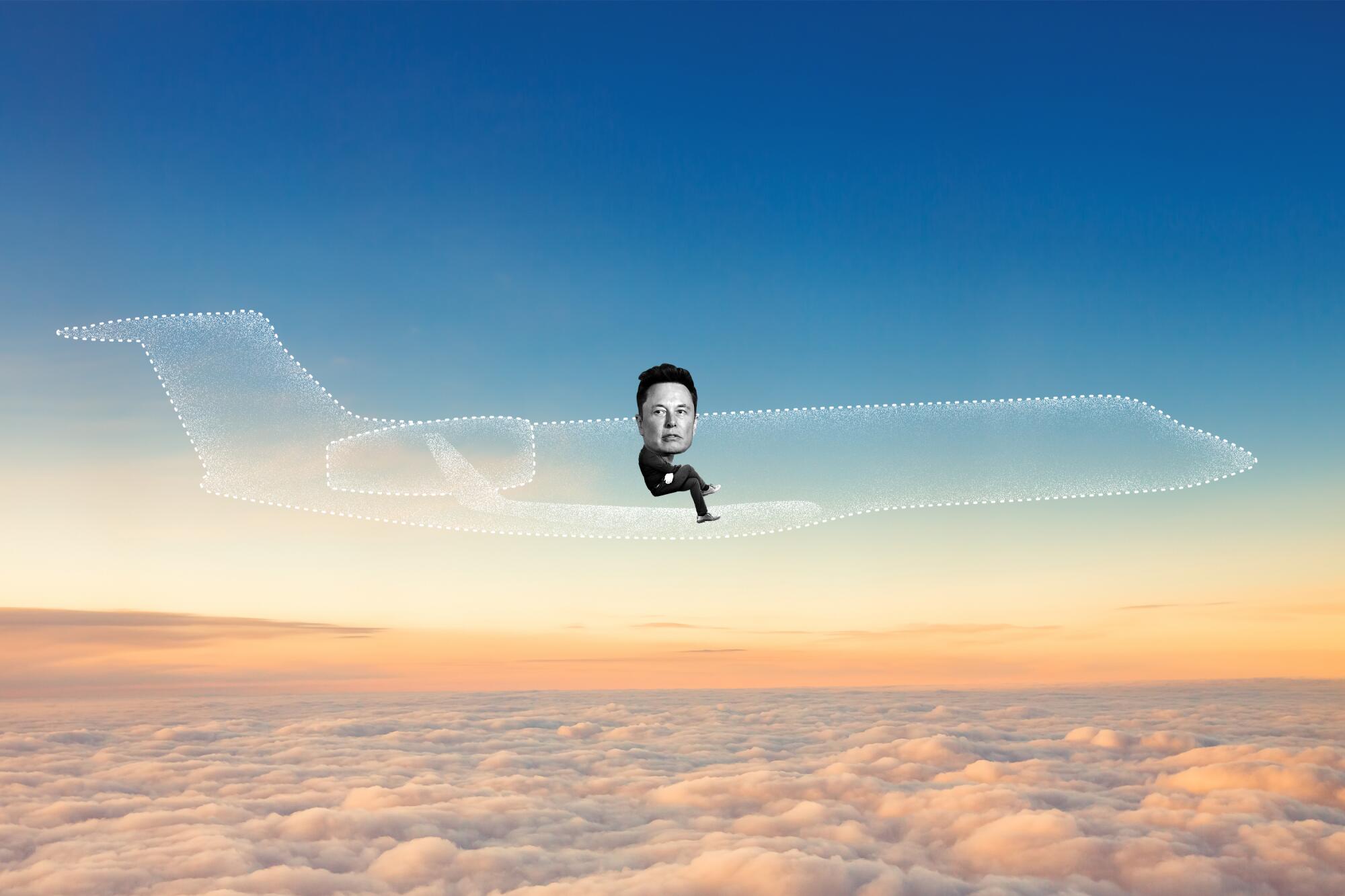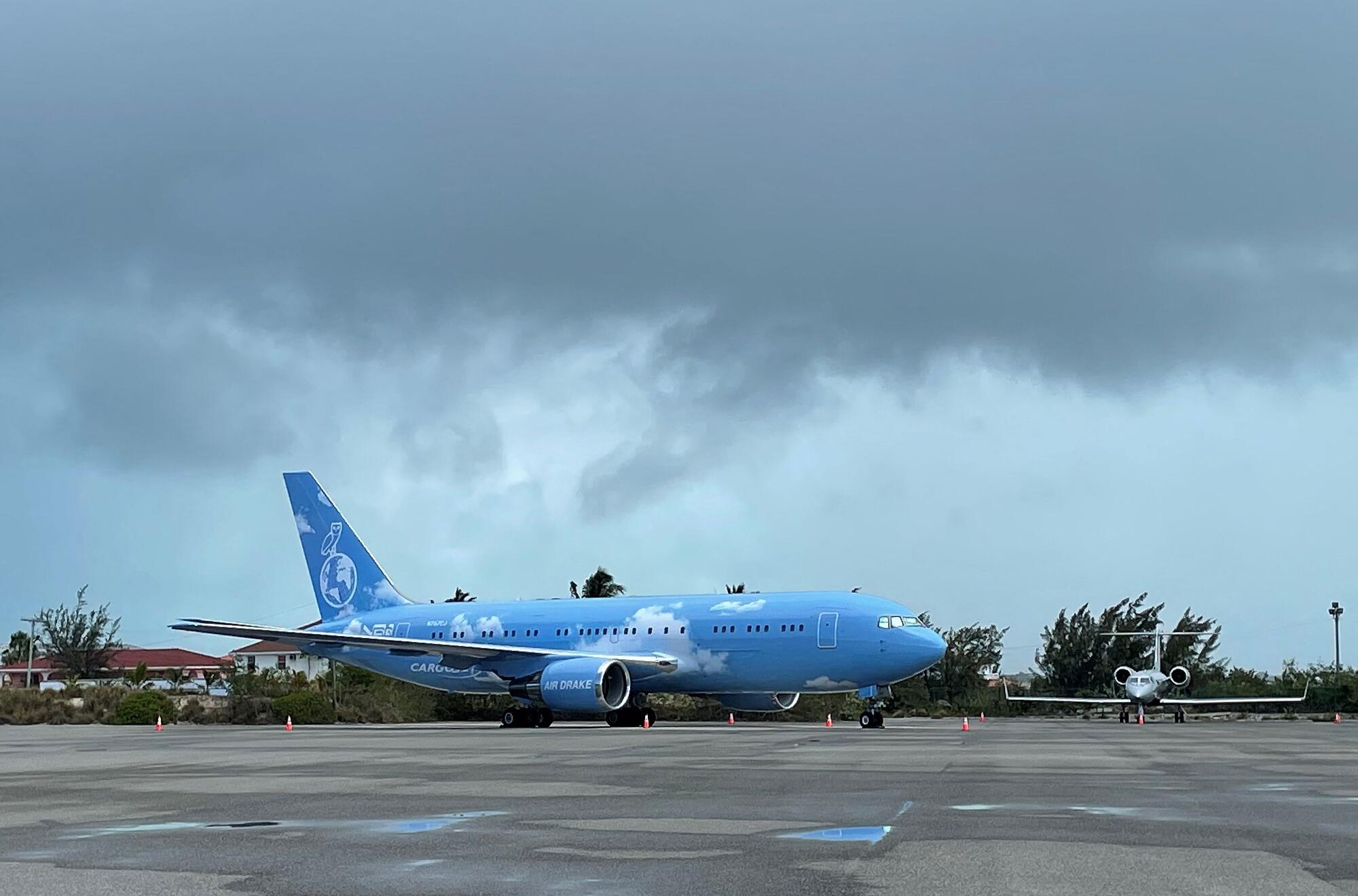
Owning a private plane just isn’t what it used to be.
Citing security risks and privacy rights, the wealthiest of ultra-wealthy jet owners have had it with tracking websites and social media accounts dedicated to pinpointing their exact whereabouts as they move through the skies.
Last week Elon Musk, the world’s second-richest man, suspended dozens of Twitter accounts belonging to a 20-year-old college student who had been posting the routes of private jets, including Musk’s Gulfstream G650. “Any account doxxing real-time location info of anyone will be suspended, as it is a physical safety violation,” Musk tweeted.
Earlier this year, Bernard Arnault, the world’s richest man, sold his company’s private plane after growing frustrated that his travel routes were being broadcast. The French business magnate told a radio station in October: “The result is that no one can see where I go because I rent planes when I use private planes.”

The right of billionaires to travel in secrecy is a niche concern, to say the least. But it’s one that has been thrust into the spotlight after those high-profile moves, especially as Musk has contended that measures he took to block his plane’s location were being ignored.
Flight tracking data have long been publicly available for aviation enthusiasts who knew where and how to obtain it. What’s changed in recent years is that there’s more of it, it’s easier to access and people have become more sophisticated in their digging — and use social media to instantaneously spread the information to the world. Crowdsourced websites and hobbyist-run accounts have proliferated across multiple platforms, coinciding with a huge spike in private air travel during the pandemic.
The most prominent independent jet tracker is Jack Sweeney, the University of Central Florida sophomore whose Twitter accounts were banned by Musk; before its suspension, Sweeney’s automated @ElonJet account had amassed more than half a million followers.
The popularity of private jets among the 1% has made Van Nuys Airport a critical hub. It’s bathing the surrounding communities in noise and fumes.
In an interview with The Times on Tuesday, Sweeney said that despite legal threats from the billionaire, he believed he had a right to publish the location of Musk’s main Gulfstream and his other private jets. He noted that many of the people whose planes he has tracked — including Kim Kardashian and Taylor Swift — were already easy to find via their own social media activity and paparazzi photos, and said that jet tracking was largely innocuous.
“It’s just part of being a celebrity: People are going to post about you. I don’t want to be harmful to Elon — I started as a fan,” Sweeney said. Undeterred by the Twitter suspensions, he now posts his jet-tracking findings on YouTube, Instagram, Discord, Facebook, Mastodon and Telegram, tracing Musk last weekend as the Gulfstream traveled to Qatar for the World Cup final.
“It’s not illegal to connect dots,” Sweeney said. “Some people are saying it’s not public. It’s totally all out there. That’s like saying receiving AM or FM signals in your car is not public. These signals are there and it’s legal to receive them.”
Who’s using public airspace is typically seen as public information because it relies on taxpayer-funded infrastructure, such as air traffic control towers, said Ben Wizner, director of the American Civil Liberties Union’s speech, privacy and technology project.
The ACLU and investigative journalists have previously tracked tail numbers to uncover shadowy government abuses.
There is “significant public interest in generally being able to identify what flights are going above us and where they’re going,” he said. “I’ve never heard of a successful effort of someone to claim that this is not public information.”

Jet owners say the publication of such information is invasive, making them and their family members vulnerable to “crazy stalkers.” They also contend that their business dealings could be hindered by eagle-eyed viewers knowing where they’re going, such as a chief executive spotted flying toward the headquarters of an acquisition target, or a coach heading to the city of a hot free agent during the offseason.
And many are sensitive to being labeled climate criminals: Some jet trackers calculate the huge amounts of fuel consumed during private flights presumably carrying only a few passengers, and have called out stars including Kylie Jenner, Drake and Oprah Winfrey for taking their planes on flights that are just a few minutes long.
Jenner in particular faced swift backlash this summer when she posted a photo on Instagram of herself making out with her boyfriend, Travis Scott, on the tarmac in between two private jets. “You wanna take mine or yours?” she captioned the post.
We have guys that are now chartering airplanes if it’s a super important kind of trip that they want full privacy and anonymity on. They’ll let their airplane sit because it’s just not worth the risk.
— Matt Walter, director of business development at Van Nuys-based charter company Planet 9
Public flight-tracking information is gathered from multiple sources, highlighting a complex web of aviation systems and agencies that each has its own data sets and usage rules.
Planes flying in most controlled airspace in the U.S., whether commercial flights or private jets, are required to have Automatic Dependent Surveillance-Broadcast, or ADS-B — a technology that allows the aircraft to directly broadcast information such as its altitude, geographic location or speed to Federal Aviation Administration ground stations, other planes or satellites.
ADS-B data are primarily intended for safety purposes and help pilots and air traffic controllers detect other aircraft and avoid collisions as well as enable family members or business associates on the ground to keep tabs on a passenger en route.
Such information is unencrypted and available to anyone who has a radio receiver — which can be purchased for as little as $30 on Amazon and can plug into a USB drive — and a mini-computer. Popular flight-tracking websites such as FlightAware and Flightradar24 rely heavily on ADS-B data.
The curious can also subscribe to data from the FAA, which encompasses additional information such as flight plans.
There are, however, measures in place for jet owners who want to fly under the radar, so to speak.

From the outset, many owners register their planes under LLCs or trusts instead of listing their own names, a strategy also commonly used by yacht owners. They can also have their plane’s unique tail number flagged in the FAA’s aircraft database and blocked from public tracking by submitting an application under a privacy program known as Limiting Aircraft Data Displayed.
Jet-tracking websites that obtain access to FAA data must comply with the rules of LADD and with a second program called Privacy ICAO aircraft address, or PIA, which adds another layer of anonymity by assigning a random identifier code to the plane so that it is harder to track. Musk has suggested that participating in these programs should have blocked his information from all public view and that his plane was “not trackable without using non-public data.”
But there are loopholes and simple workarounds that Sweeney and others have employed.
Networks like ADSBexchange.com, which uses data fed from private citizens with home receiver setups instead of FAA data, are not bound by the agency’s rules.
The two FAA privacy programs, meanwhile, are restricted only to U.S. domestic airspace. And even if a plane uses the PIA program, a hobbyist who can physically see the tail number of the plane — say, by watching it land at Van Nuys Airport — can match it up with the random identifier code broadcast from radio for a plane that just touched down in the same location. People who listen to air traffic control broadcasts can also sometimes hear the tail number through communications.
Jet owners’ exasperation with being tracked is starting to benefit charter companies. Fly with us instead of your own plane, they’re telling prospective customers, and no one will know you’re on board. Several charter companies said they will even allow high-profile flyers to board the aircraft inside the airplane hangar to evade detection.
Yacht brokers say demand is through the roof, with little to no inventory and multi-month wait lists.
“You can track a specific tail all day long, you can know which aircraft is where,” said Leona Qi, president of VistaJet U.S., “but if you don’t know who’s the passenger, that has no value.”
Matt Walter, director of business development at Planet 9, said the Van Nuys-based charter company blocks the tail numbers of all 30 planes in its fleet, most of them ultra-long-range jets owned by private individuals.
“We have guys that are now chartering airplanes if it’s a super important kind of trip that they want full privacy and anonymity on,” he said. “They’ll let their airplane sit because it’s just not worth the risk.”
Three of those owners have even inquired recently about selling their planes, he said, perhaps intrigued by Arnault’s decision to offload his LVMH jet.
“It’s fascinating what’s happening,” Walter said. “We’ve had owners inside our own fleet come to us and ask if it’s a good time to sell and can we support them with charter aircraft if they sell. ... The conversation is being driven off of the story that these airplanes can be tracked.”
Aviation enthusiasts who have developed flight tracking accounts see the data as a public good.
John Wiseman, 52, started his Advisory Circular network of Twitter bots after noticing police helicopters circling over his then-residence in Silver Lake. The bots use ADS-B data to identify when aircraft are circling over an area in cities such as Los Angeles, Chicago, Philadelphia and the San Francisco Bay Area.
Over the years, Wiseman’s work uncovered an FBI surveillance program over U.S. cities, which was also confirmed by an Associated Press story. Through ADS-B data and additional research, he’s also found a plane in the L.A. area that drops sterile fruit flies to help reduce the fruit fly population, among other discoveries.
“I love that it’s available; I think it’s important,” Wiseman, a software engineer, said of ADS-B data. “It gives a kind of transparency into the operations of government like law enforcement. As soon as you start looking — and it’s really easy to look — you just find interesting stuff up there.”
More to Read
Inside the business of entertainment
The Wide Shot brings you news, analysis and insights on everything from streaming wars to production — and what it all means for the future.
You may occasionally receive promotional content from the Los Angeles Times.














